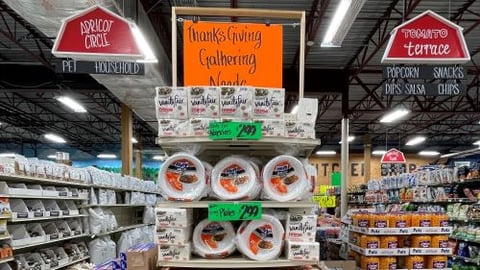U.S. Grocery Shoppers Resilient as Food Prices Rise
According to the fifth edition of the “U.S. Grocery Shopper Trends 2022” series from FMI – The Food Industry Association, which focused on the back-to-school occasion, 90% of shoppers are concerned about some aspect of food accessibility, with 61% worried about rising prices specifically — an eight-percentage-point increase since February. Even in an inflationary environment, however, shoppers believe that they have at least some degree of control over their finances, particularly in regard to their grocery budgets (86%).
“Our research substantiates that the food industry offers safe, healthy, quality foods, such as store-brand products, at affordable price points and provides shoppers other helpful resources to stretch their grocery budgets, helping meet their household’s specific food needs,” said Leslie Sarasin, president and CEO of Arlington, Va.-based FMI.
Shoppers’ concerns about rising prices are focused on essential items, among them gas (77%), food (72%) and housing (59%) costs. Households with children are especially worried about rising prices of school supplies (64%) and clothing (65%). Although shoppers said that they’re feeling pinched, they noted that they had control over aspects of their household budget, particularly eating out (91%), grocery shopping (86%) and, for households with kids, child care (87%).
Shoppers reported weekly grocery spend totals of $136, $12 lower than in February. According to FMI, this is partly a seasonal effect, with consumers eating out more during the summer, but it also points to belt-tightening behaviors. Shoppers believe that they’re curbing their grocery spending, reaching a lower ongoing weekly total, as they adjust their overall household budgets.
Shoppers are coping with rising food prices by seeking deals (49%), buying more store brands (41%), purchasing fewer items (37%), buying in bulk (23%) and using store loyalty programs more (22%). Consumers are also seeing different benefits from shopping in-store or online. They observed that when shopping in a physical store, they can make adjustments at the shelf (61%) and save on shipping/delivery (57%), but when grocery shopping online, they can better monitor basket size (64%) and save on gas (62%).
The “U.S. Grocery Shopper Trends: Back to School” report contains further information regarding shoppers’ concerns about COVID-19 and its long-term impact, details on the ways rising food prices affect food-insecure households, restaurant spending versus grocery spending, and more.






